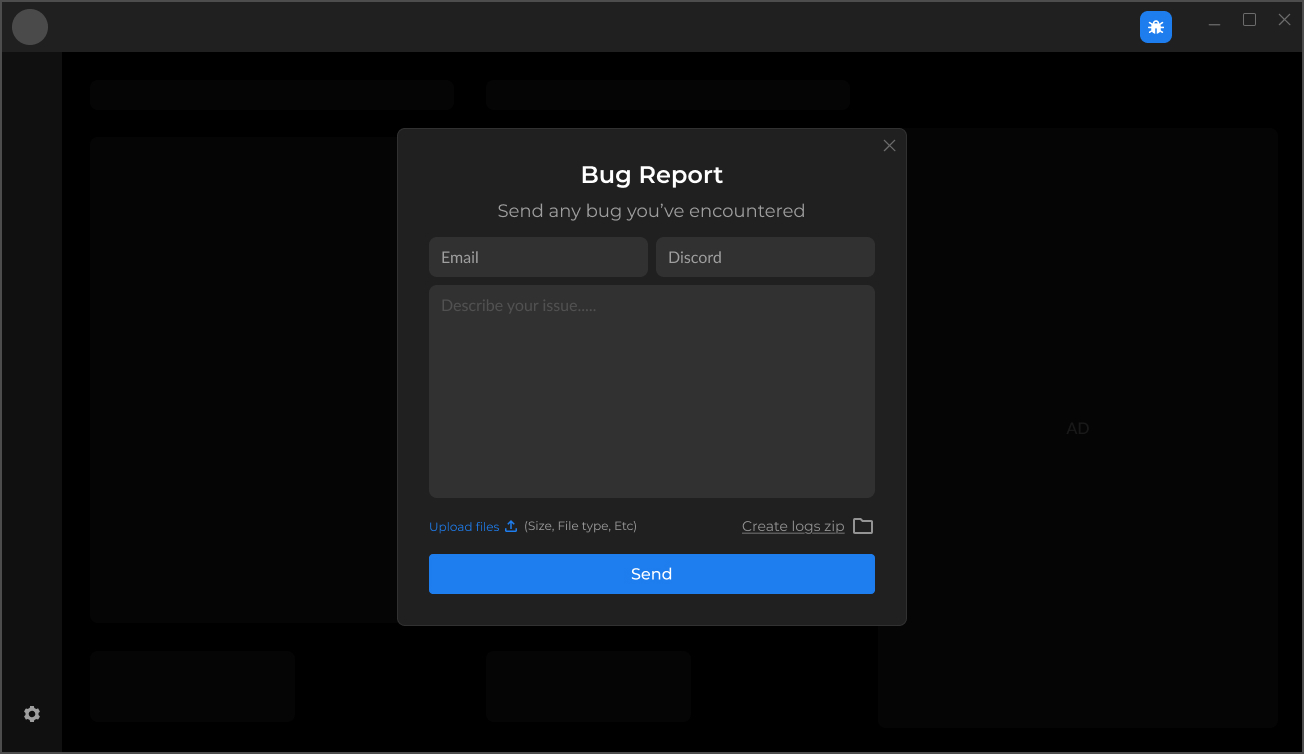Support Your Users
Today’s gamers are empowered, informed, and vocal. They actively seek out information, share opinions, and expect responsive, meaningful engagement from the products they use. Effective user support is no longer just a back-office function; it shapes how users perceive your product, how likely they are to recommend it, and how connected they feel to your community. Supporting users the right way can turn casual players into passionate advocates.
Step 1 - Choose your platform
The platform you choose will play a critical role in setting up the main channel for engaging with your users. The right platform for you is the one that will allow you to serve users in the most effective and consistent way. Before you choose, ask yourself, what type of support do your users expect? Gamers can be very demanding. What’s the best way to engage with them, Email, Discord, or are they comfortable using self-service tools? How fast do they expect to get an answer?
Once you have a clear vision of the best user support you can offer, it'll be easier to make a decision. It is recommended that you focus on a platform that gamers are familiar with. For example, Discord and emails are used by gamers frequently and could provide an easy, and cost effective (free) solution.
Step 2 - Create a unique support experience
Truly legendary support ends when a user is fully satisfied and even recommends your app to their friends. Hopefully, they might even tweet about it. Communication changes from platform to platform, so no matter which one you choose, make sure you aim to be legendary.
-
Nail your first impression—with every new encounter, you are evaluated and an impression of you is formed or reformed. Make sure your platform profile is set with your full name/nickname, profile picture, signature. Mention your role in the app, something you can easily do in Discord under status, or in your email signature (e.g., Developers Community Manager at Overwolf). Greet the user with their name and if the platform uses a tagging system, tag the user to notify them.
-
Gather as much information as you can—if you own a live app, you’ve probably heard “The app isn’t working” quite a number of times. Sometimes users will have a hard time explaining the issue they’re having. It’s your job to help them by asking the right questions, and lead them to the best solution as quickly as possible. Try to guide them asking such as “Could you tell me the exact steps that caused the app to crash?”. You may need to more direct, so ask “After you opened the app, where did you click?”.
-
Finish on a positive note—whether you’ve figured out the issue or not, the user will remember you and their support experience. This will be reflected in how they perceive your app, and will then be translated into your app's retention. Sign off with a sentence that leads to continuous engagement in the future. For example, “Let me know if that worked", or “Is there anything else I can help you with?”. You can even refer them to your Discord community to engage with other community members for support.
Step 3 - Add a knowledge base
A help center is the ultimate support tool for your app. It builds over time, and can level up your app from being a good to awesome. USe text, pictures, and videos that give your users the knowledge right when they need it the most.
Best practices for in-app support and reporting
A well-structured support system helps users quickly resolve issues, improves user satisfaction, and reduces frustration. This article outlines the best practices for providing support in your Overwolf app.
Essential support features
- Easy access to support—place a clear support icon in the top bar or side navigation for quick access.
- Proactive issue detection—if your app crashes, or encounters an issue, design it to inform and guide users to support when needed.
- Pre-support resources (FAQs & Self-Help)—help users before submitting a support request by:
- Including an FAQ section for common questions to help users find answers before reaching out.
- Considering UX help features such as coach marks or other FTUE elements.
- Bug reporting feature—users should be able to report bugs easily from within the app.
In-app support channels
The following recommendations will help you level up support for your app:
- In-app support button—a clear Support icon in the top bar or side menu.
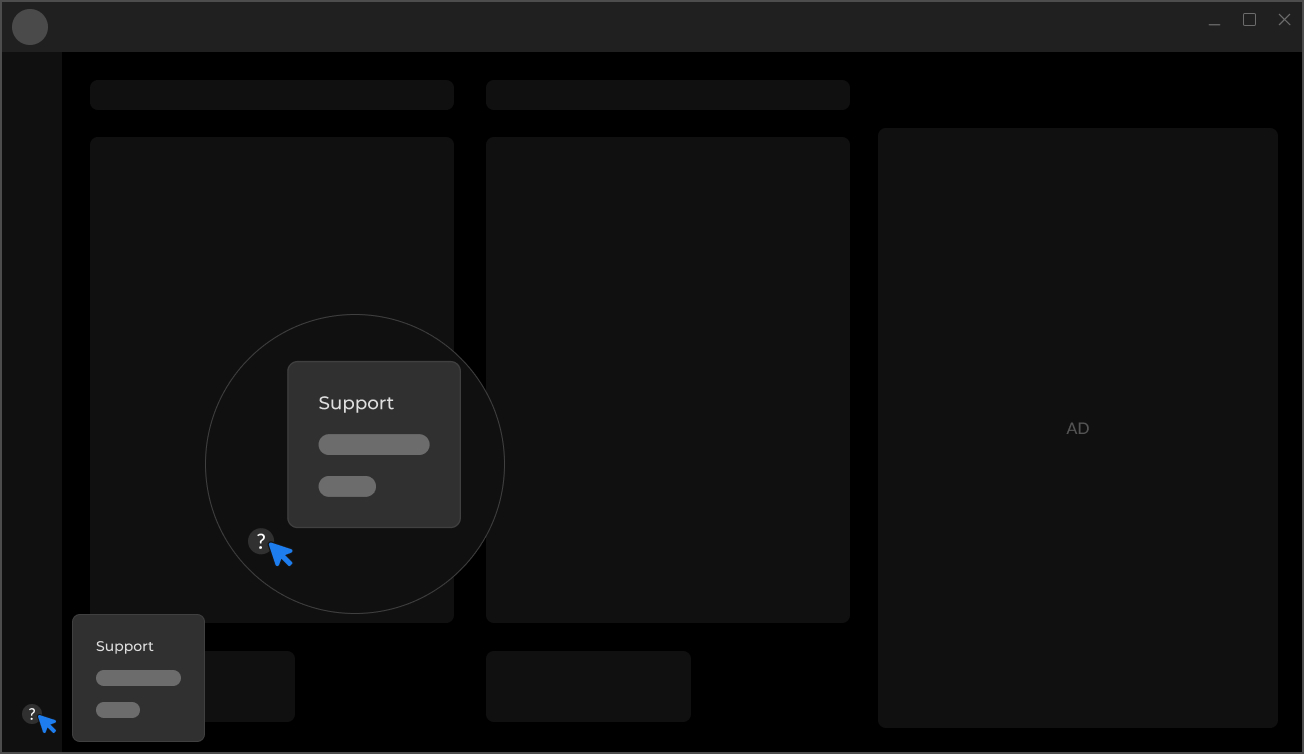
- Discord community channel—engage with users and provide real-time assistance.
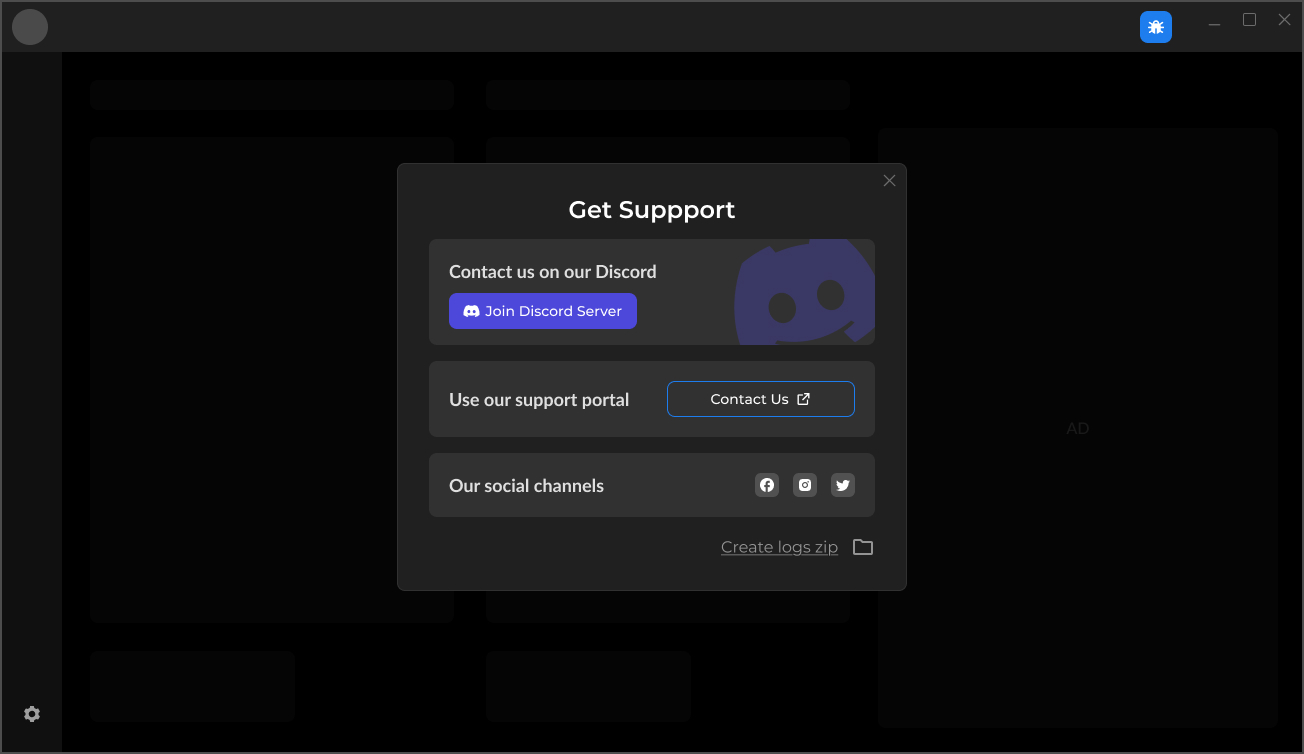
- Help Bot—automate responses to common questions.
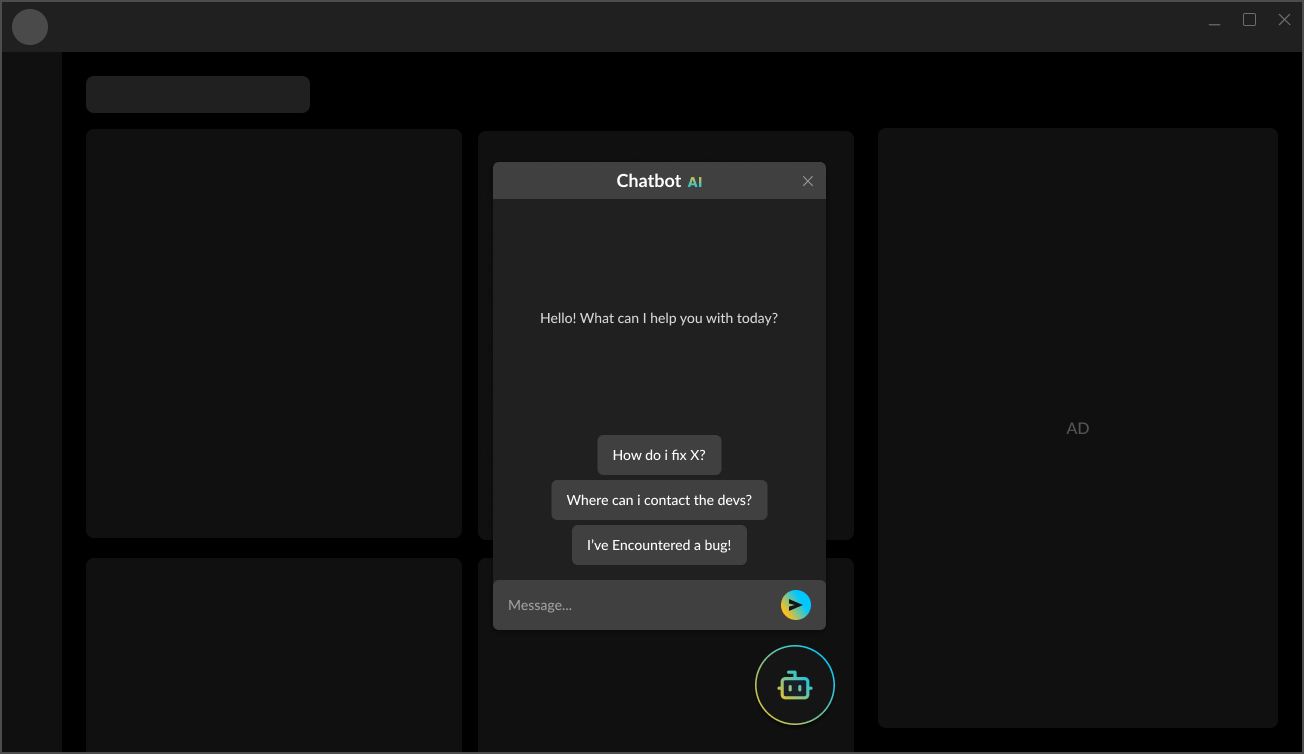
- Help center and FAQ section—reduce support requests with self-service help.
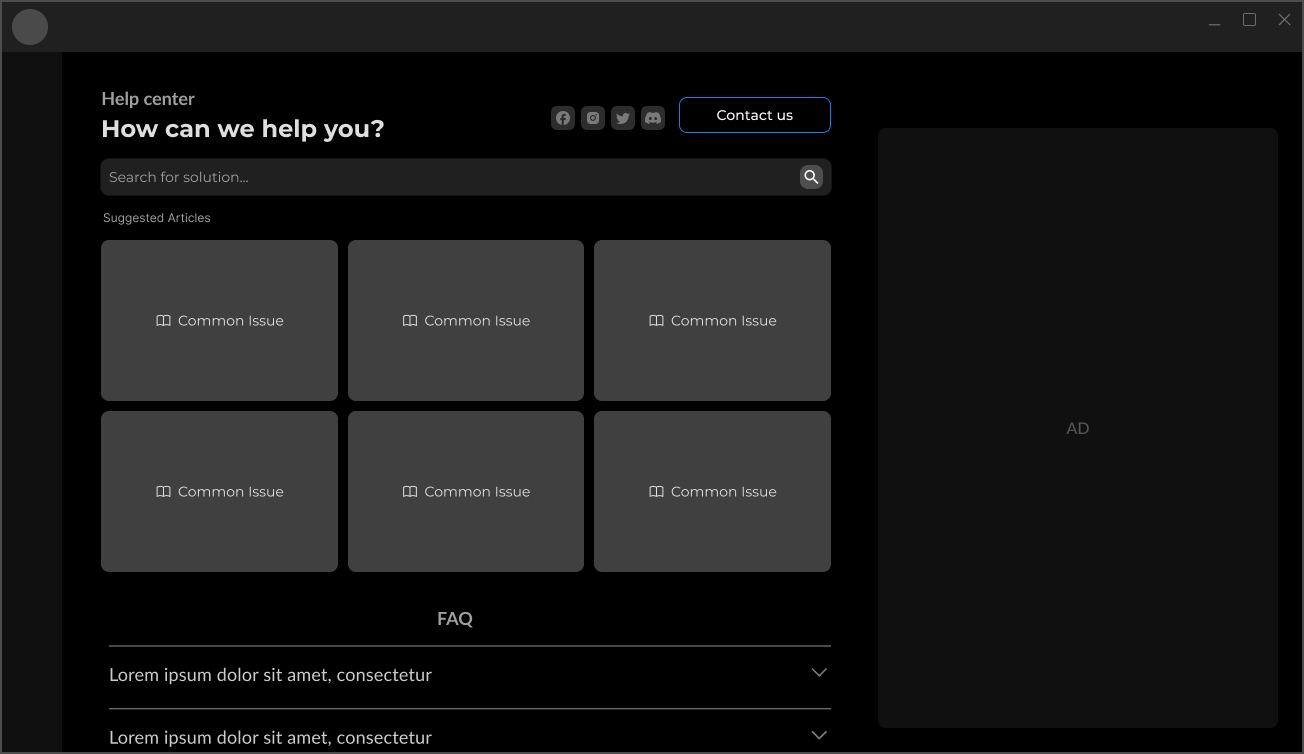
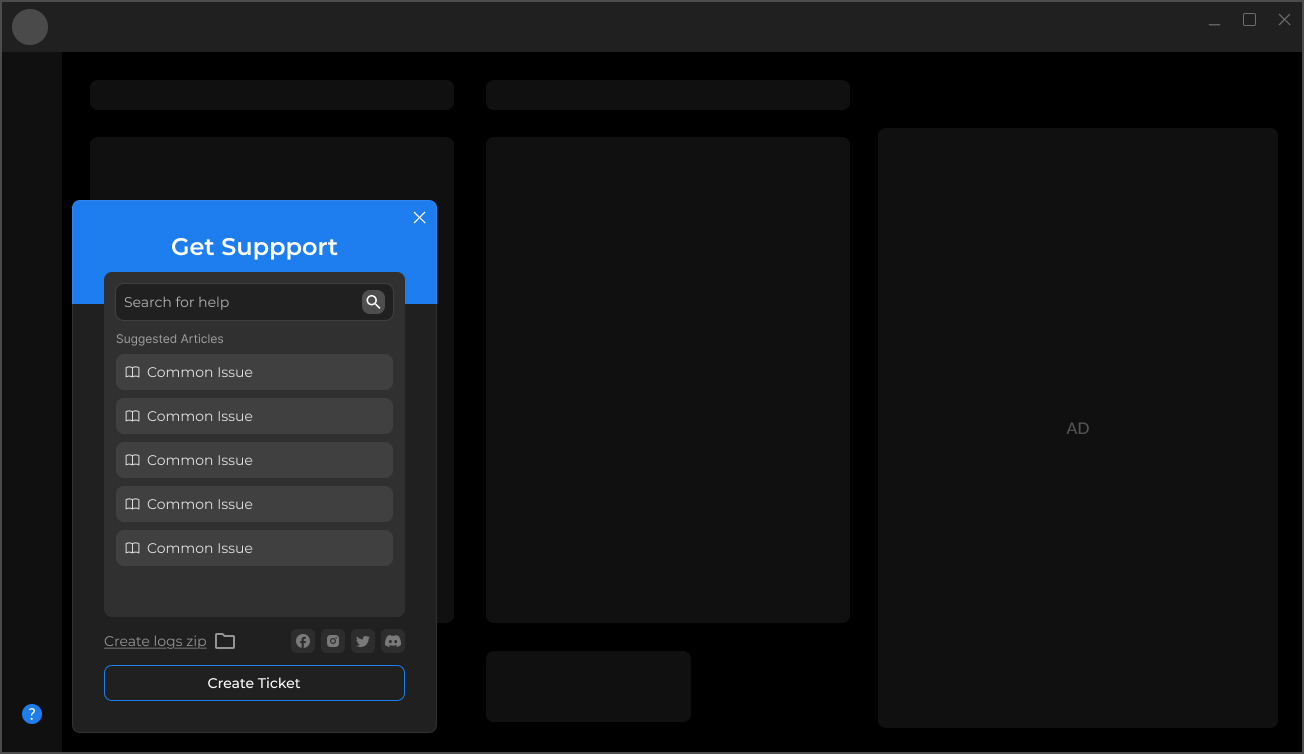
In-app bug reporting
In-app bug reporting is crucial because it bridges the gap between users encountering issues and developers resolving them. Implement
Bug reporting with Logs in your app to allow users to report bugs easily. Your app can also collect and automatically upload the user logs to your Developers Console so that you can easily download and diagnose user issues. Use the overwolf.utils.createLogsZip to build the logs and overwolf.utils.uploadClientLogs to upload them to your Developers Console.
